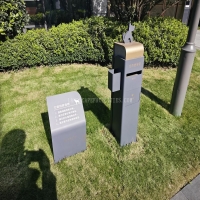Welcome to the website for landscape facilities products and knowledge.
How does the table’s design account for ease of movement across different surfaces?
Contemporary table design has evolved significantly to address the crucial need for easy movement across diverse surfaces. The engineering behind mobile tables incorporates multiple innovative elements that work in harmony to provide seamless transportation while maintaining structural integrity.
Material selection plays a fundamental role in achieving optimal mobility. Lightweight yet durable materials like aircraft-grade aluminum, reinforced polymers, and carbon fiber composites reduce overall weight without compromising strength. These materials enable users to effortlessly relocate tables between rooms, across patios, or over various floor types.
Leg design represents another critical aspect of mobility engineering. Manufacturers employ various leg configurations including tapered profiles, rounded edges, and specialized gliders that minimize surface resistance. For carpeted areas, tables feature smooth gliders that slide effortlessly, while hard surfaces benefit from soft-rubberized feet that provide both grip and easy sliding motion when lifted slightly.
The integration of wheel mechanisms has revolutionized table mobility, particularly for heavier pieces. Advanced caster systems now include dual-wheel functionality - locking wheels for stability during use and swivel wheels for multidirectional movement. High-quality casters feature weight distribution technology that prevents floor damage while ensuring smooth transitions between different surface textures.
Surface-adaptive technology represents the latest innovation in table mobility. Some modern designs incorporate self-adjusting leg levelers that automatically compensate for uneven surfaces, maintaining stability while allowing easy repositioning. These intelligent systems use pressure-sensitive mechanisms that adapt to floor irregularities, whether moving across plush carpets, hardwood floors, or outdoor paving stones.
Edge and corner engineering significantly impacts movement capability. Rounded corners and streamlined profiles prevent snagging on doorways, furniture, and other obstacles during transportation. The balanced weight distribution achieved through strategic material placement ensures tables remain manageable during movement, regardless of the surface type.
Handle integration and ergonomic considerations complete the mobility equation. Many contemporary tables feature discreet handles or grip-friendly edges that provide comfortable lifting points. The science of center-of-gravity calculation ensures that even when loaded with items, tables maintain their balance during relocation across challenging surfaces.
From smooth office floors to rough outdoor terrains, today's table designs demonstrate remarkable sophistication in addressing movement challenges. Through intelligent material selection, innovative leg systems, and user-centered features, modern furniture engineering successfully combines effortless mobility with reliable stability across all surface types.
Related search:

Recommendation
Outdoor cat and dog feces trash can; Community pet trash can; Metal multi-color design